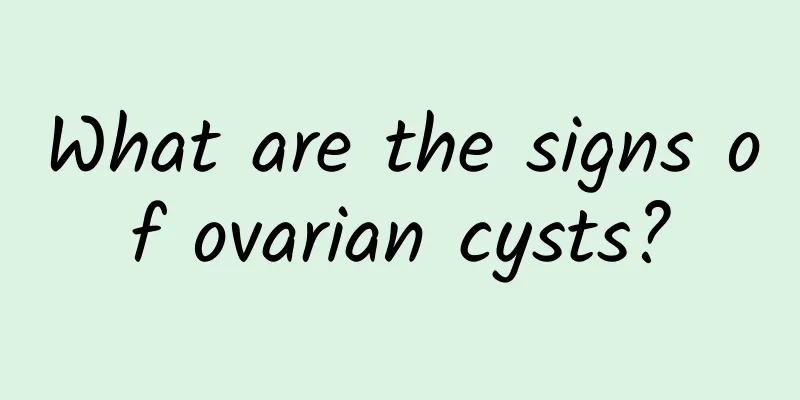Can congenital absence of vagina recur?

|
Can congenital absence of vagina recur? In fact, it can be cured with professional treatment methods. Experts say: The timing and method of treatment are determined according to the development of the patient's uterus. Congenital absence of vagina can be treated. The vagina can be reconstructed through surgery. If a female friend has not had menstruation after the age of 18, it is a big deal and must be taken seriously. The following is a detailed introduction. Can congenital absence of vagina be treated? The principle of treatment for congenital absence of vagina is to reconstruct the vagina. The timing and method of treatment are determined based on the development of the patient's uterus. After detailed examination, if the patient has a nearly normal uterus and normal ovarian function, surgery should be performed after menarche to facilitate menstrual blood drainage and sexual intercourse. After treatment, there is hope for intrauterine pregnancy. If there is no uterus or primordial uterus and other women who are not likely to have children, it is best to perform artificial vaginoplasty before or after marriage to mainly solve the problem of sexual life. The following is an introduction to the treatment methods for congenital absence of vagina: 1. Skin flap transplantation: The advantages of this procedure are simple and safe operation with a high success rate. However, it is relatively dry in the vagina and requires a mold to be placed in the vagina day and night for more than half a year. In addition, the skin graft is prone to necrosis and shedding, infection, and granulation, which makes the vagina shallower or the scar on the top of the cave shrinks. 2. Amniotic membrane transplantation: The advantages of this procedure are that it is simpler and has a higher success rate. The resulting vagina is similar to the natural vagina. However, it takes a long time for the artificial vagina to be completely covered by normal mucosa after the operation, and during this period, the vagina often becomes infected and forms scars and shrinks. The vaginal mold must be placed for a long time after the operation, which brings great pain to the patient. 3. Peritoneal vaginal replacement: This procedure is similar to amniotic membrane transplantation. The artificial vagina formed is close to the natural vagina, but the vaginal mold also needs to be placed for a long time. 4. Sigmoid colon replacement for artificial vagina: In comparison, this procedure has the highest success rate, and is very similar to a normal vagina in appearance and function. The vaginal mucosal walls are well-wrinkled, soft and moist, and usually have a little sticky secretion; the width and length are ample, which helps to make sexual life more pleasurable. Compared with the above procedures, it also has the advantage of not having to place a vaginal mold after surgery. This procedure is currently the most ideal procedure. It is especially suitable for patients who have undergone other vaginal shaping procedures before, and have caused vestibule-rectal fistula, bladder (urethra) vaginal fistula after surgery, or surgical cavitation that damaged the rectum, urethra or bladder. |
<<: What are the symptoms of congenital absence of vaginal infection?
>>: Is there a genetic factor for congenital absence of vagina?
Recommend
Prevention of cervical hypertrophy should be done in daily life
In life, some women are also prone to different d...
What are the symptoms of adenomyosis in gynecology
Adenomyosis is mostly diffuse. Due to unclear bou...
How long does it take to get pregnant after laparoscopic surgery for ectopic pregnancy
After laparoscopic surgery for ectopic pregnancy,...
10 Amazing Benefits of Bananas
Bananas are popular all over the world for their ...
Auxiliary diagnostic methods for pituitary amenorrhea
Pituitary amenorrhea is caused by organic lesions...
What are the nursing matters for dysmenorrhea?
Dysmenorrhea is one of the common diseases of wom...
Do energy bars make you fat? Eat 4 foods after exercise to lose weight
[Key points]: Fitness consumes a lot of energy. A...
Lose weight easily with 5 good habits before going to bed
Many weight loss methods are closely related to s...
What is the best medicine for female cervical erosion? Principles of drug treatment for female cervical erosion
Cervical erosion is a gynecological disease that ...
Experts introduce us to the symptoms of cervical erosion
The most common gynecological disease is the symp...
Burn fat quickly and noticeably in 30 days! Smart use of centrifugal force, "downward movement" to make the area you want to lose weight smaller
Did you know? In fact, "downward" movem...
What are the treatments for Bartholinitis?
Bartholinitis is a disease that women may suffer ...
Four methods of external treatment of vulvar leukoplakia with traditional Chinese medicine
Vulvar leukoplakia is a common disease among wome...
Miracle diet GM weight loss, lose 4 kg in 7 days? Famous weight loss doctors solve 4 blind spots
There are many lazy weight loss methods circulati...
How do I know if I have uterine adhesions?
To know whether you have intrauterine adhesions, ...









